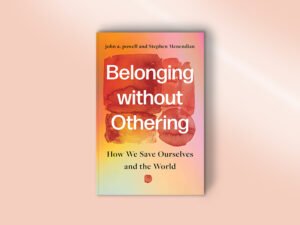June 2014;Critical Issues Forum (Philanthropic Initiative for Racial Equity)
The date on the fifth volume of PRE’s Critical Issues Forum is June 2014, but we suspect that many readers of the NPQ Newswire may not be within the philanthropic circles that typically keep up with the literature on structural racism and so haven’t seen the latest installment of this series on foundation approaches to racial justice. Therefore, despite the publication date, it is still current enough to warrant NPQ Newswire coverage.
The fifth volume of PRE’s Critical Issues Forum is something of a retrospective on the understanding and adoption of a racial equity lens in philanthropy through the 10 years of PRE’s existence, with profiles of specific foundations (Akonadi, the California Endowment, the Woods Fund, and Z. Smith Reynolds) that should attract readers interested in how foundations approach issues such as racial justice and structure or restructure their grantmaking in response.
This author has contributed to PRE publications on occasion, and in this volume contributed a brief review of foundation grantmaking for racial justice—except that there is no established indicator of “racial justice” against which foundation grantmaking can be reasonably measured. Definitions of racial justice vary. At the Foundation Center, there are statistics on grantmaking for “civil rights and social action,” a category that probably intersects but is not synonymous with racial justice.
We used Foundation Center statistics to look at the proportion of foundation grant dollars (for the largest foundations in the U.S.) that were dedicated to the benefit of specific racial or ethnic groups:
| Designated domestic pop. group/grantmaking year |
2011 |
2010 |
2009 |
2008 |
2007 Sign up for our free newslettersSubscribe to NPQ's newsletters to have our top stories delivered directly to your inbox. By signing up, you agree to our privacy policy and terms of use, and to receive messages from NPQ and our partners. |
2006 |
2005 |
2004 |
2003 |
2002 |
2001 |
2000 |
1999 |
1998 |
| Ethnic/racial | 8.8 | 9.5 | 8.9 | 6.8 | 6.9 | 7.4 | 8.2 | 7.6 | 8.0 | 8.1 | 7.0 | 7.7 | 7.9 | 9.9 |
| General | 4.9 | 5.3 | 5.6 | 3.8 | 3.4 | 3.5 | 4.0 | 3.9 | 4.1 | 3.7 | 3.7 | 4.4 | 3.9 | 4.4 |
| Asian-American | 0.3 | 0.3 | 0.2 | 0.2 | 0.3 | 0.3 | 0.3 | 0.4 | 0.5 | 0.6 | 0.4 | 0.4 | 0.3 | 0.5 |
| Afr.-Amer./Black | 1.5 | 1.3 | 1.4 | 1.2 | 1.4 | 1.5 | 1.9 | 1.6 | 1.6 | 1.9 | 1.4 | 1.4 | 1.9 | 3.8 |
| Hispanic/Latino | 1.2 | 1.4 | 0.9 | 0.8 | 1.0 | 1.2 | 1.3 | 1.3 | 1.2 | 1.1 | 1.0 | 0.9 | 1.2 | 0.9 |
| Native American | 0.4 | 0.4 | 0.3 | 0.4 | 0.4 | 0.3 | 0.5 | 0.4 | 0.5 | 0.7 | 0.5 | 0.5 | 0.6 | 0.6 |
| Indigenous | 0.3 | 0.2 | 0.2 | 0.2 | 0.2 | 0.1 | ||||||||
| Other | 0.2 | 0.2 | 0.3 | 0.2 | 0.2 | 0.2 | ||||||||
| Immigrants/Refugees | 1.1 | 1.3 | 1.1 | 1.2 | 1.0 | 1.1 | 1.0 | 0.9 | 0.9 | 0.8 | 0.7 | 0.9 | 1.0 | 1.0 |
We wouldn’t suggest that targeting grantmaking to specific racial groups means that the grants address racial justice or racial equity or concepts of structural racism, but the trend does provide some analytical context. Overall, grants for ethnic/racial groups overall, for “general” racial/ethnic groups, and for African Americans have declined as a proportion of all grants between 1998 and 2011. It is entirely possible that the recent spate of grantmaking addressing issues faced by young black men, consistent with President Obama’s My Brother’s Keeper initiative, may have reversed that trend. However, our review of the grantmaking in this topical area for 2012 and 2013—as tracked by the Leadership and Sustainability Institute of Black Male Achievement and bmafunders.org, a project of the Open Society Foundations and the Foundation Center—found 330 grants (larger than $10,000) totaling $45.8 million. Of that total, $12.8 million (29 percent) came from the California Endowment, another $7.7 million from the Robert Wood Johnson Foundation, and $4.23 million from the Ford Foundation. In other words, over half of the grantmaking was attributable to only three foundations.
Our guess is that despite the Foundation Center’s statistics, it is difficult to imagine that the combination of the leadership of the California Endowment on issues of black men and black boys, the national pronouncements of President Obama on the issue, and the increasing attention to racial disparities in education, health, and employment haven’t led to increased foundation grantmaking targeted to racial groups, specifically African-Americans. Our question is whether the bulk of that grantmaking addresses in new ways some of the structural issues that impede redressing racial equities, or whether it simply treats the symptoms without getting at the underlying causes. Our concern, given the structure and content of the federal My Brother’s Keeper initiative, is whether foundation leadership on this issue, even of the sort evidenced by the California Endowment, can accomplish much if federal priorities aren’t radically changed and federal resources aren’t added in a major way to the funding mix.—Rick Cohen












